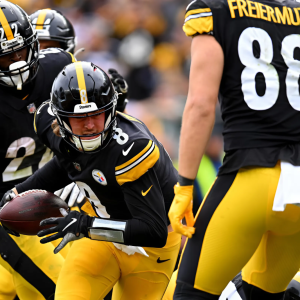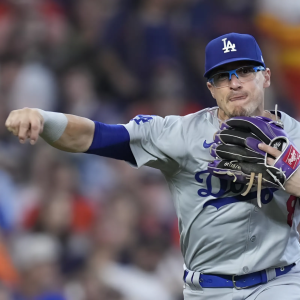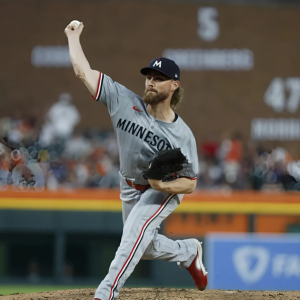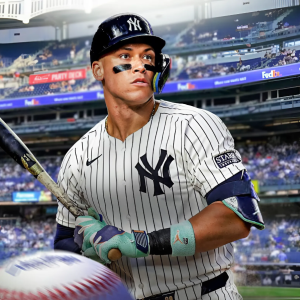There are two ways to rebuild in the modern big leagues: the meandering Red Sox way, and the let’s-make-this-quick Cubs way.
The differing approaches will be on display this weekend when Chicago visits Fenway Park for a three-game set. The similarities are obvious. Both are big-market teams that play in historic ballparks. Both overcame decades of historic failure only relatively recently. Both could commission statues of Theo Epstein.
But that’s where the similarities end. Each started rebuilding in 2019 after 84-win seasons. The Red Sox fired Dave Dombrowski and replaced him with the unproven Chaim Bloom to undertake a complete teardown that still feels amorphous under replacement Craig Breslow. The Cubs promoted longtime lieutenant Jed Hoyer after Epstein stepped down, and they prioritized a hybrid rebuild to minimize the pain of too many losing seasons, recognizing that they couldn’t tank their way back to contention like the previous title winner did over five long years.
The result? The Cubs were already on the upswing by last summer thanks to a shrewd allocation of resources, and remained in the playoff hunt until the final weekend. They own a 16-9 record today that’s among the best in the National League, just a half game behind the Brewers in the division.
The Red Sox, meanwhile, don’t seem to know what they are. Ownership famously promised a full-throttle offseason and then delivered the hum of an electric lawnmower on a dying charge. They refused to spend in free agency, stubbornly content to await the promising youngsters currently tearing up Double-A. Maybe Marcelo Mayer and Co. are the next great things, but in the meantime, the big-league product languishes.
They’re currently an overachieving 14-12 that feels distinctly temporary, thanks to an avalanche of injuries to the starting rotation. A July 31 sell-off remains a distinct possibility. It didn’t have to be this way. Just ask the Cubs.
They knew five years ago that the 2016 championship core had basically expired. They did something about it at the 2021 trade deadline with a breathtakingly bold 24 hours that saw them deal franchise stalwarts Anthony Rizzo, Kris Bryant, and Javier Baez. No running out the clock with Mookie Betts, Xander Bogaerts, Nathan Eovaldi, and J.D. Martinez before losing them all for virtually nothing. The Cubs acted.
They received young talent in return, including top prospects Pete Crow-Armstrong and Kevin Alcántara, as well as prized infielder Nick Madrigal. While they’ve yet to feel much of an impact at the big-league level, those deals were only a part of the rebuild.
The Cubs immediately spent in free agency, signing shortstop Dansby Swanson from the Braves for seven years and $177 million. They identified Swanson as the surest glove in his class, and he rewarded them with his second Gold Glove last year, as well as an All-Star berth. He’s already a team leader.
They paired him in the middle with former top prospect Nico Hoerner, who finally broke through in his fifth season at age 26 to win his first Gold Glove while stealing 43 bases. Hoerner is now a linchpin, but it didn’t happen overnight. The Red Sox would be wise to consider that learning curve when their own top prospects finally arrive.
The Cubs saw needs and filled them. In addition to Swanson, they bet big on former MVP Cody Bellinger. He overcame three injury-marred seasons with the Dodgers to regain his All-Star form last year, and when agent Scott Boras badly misread the market this winter, the Cubs happily signed him for one year and $30 million. He’s still only 28 years old, but he just went on the injured list after breaking two ribs while crashing into the fence.
Then there’s Seiya Suzuki. The Cubs bet big on the Japanese outfielder in 2022, signing him to a five-year, $85 million deal, beating out the Red Sox in the process. After an up-and-down debut while getting acclimated to the big leagues, he broke out last year with 20 homers and an .842 OPS. He was off to an even better start this April before landing on the injured list with an oblique strain that’s expected to sideline him for a month.

The Red Sox responded to missing out on Suzuki by badly overpaying for Masataka Yoshida, a DH who hasn’t even been able to crack the everyday lineup with multiple regulars injured. His $90 million contract has Rusney Castillo potential.
The Cubs never stopped developing their own players, with no success story more pronounced than left-hander Justin Steele. Drafted out of high school in 2014, he spent seven years in the minors, underwent Tommy John surgery, and finally debuted in 2021. He went 16-5 last year and is currently rehabbing a hamstring strain.
Nowhere is the difference between the two clubs more apparent than in Friday night’s marquee pitching matchup between the two biggest surprises in baseball.
The Red Sox will hand the ball to Kutter Crawford, a homegrown talent drafted by Dombrowski and developed by Bloom who leads baseball with a 0.66 ERA. The Red Sox needed starters this winter, but declined to engage with anyone of note once they got blown out of the Yoshinobu Yamamoto sweepstakes. They rather weakly pivoted to how great they felt about their internal options, who have all exceeded expectations to varying degrees, but none more than Crawford.
The Cubs counter with Shōta Imanaga, who’s exactly the kind of pitcher the Red Sox could’ve targeted this winter with just a little more belief in the current roster. Chicago landed the left-hander for a paltry two years and $22.5 million, plus two team options. All he has done is go 3-0 with a 0.84 ERA.
There’s one final difference between the clubs, and that’s how they’ve approached their managers. The Cubs liked David Ross, but when the opportunity came to steal Craig Counsell from the rival Brewers, they didn’t hesitate, giving him $40 million over five years and making him the richest manager in history.
The Red Sox have not shown that kind of love to Alex Cora, allowing him to enter a lame-duck season with the possibility that he becomes the hottest name on the market this winter. One club acted decisively, while the other dithered.
And that sums up the difference between the two organizations overall. The Cubs have a plan, and it involves developing young players while giving the big-league club the resources to compete. At some point, maybe the Red Sox will belatedly reach the same conclusion.






